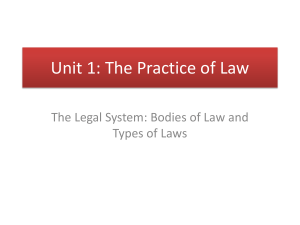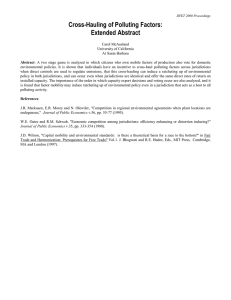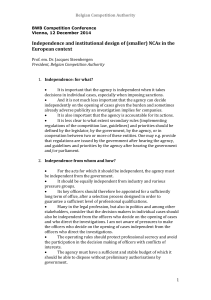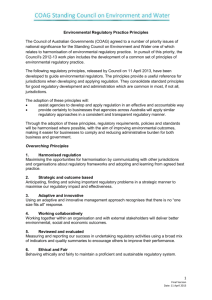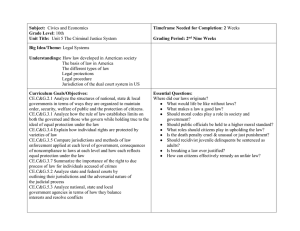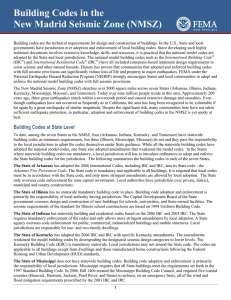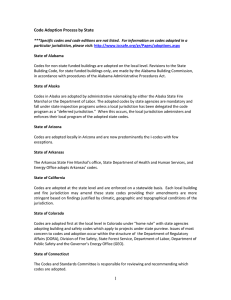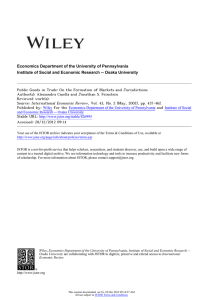W Consultative Council on: Construction Codes and Standards Industry Leadership
advertisement
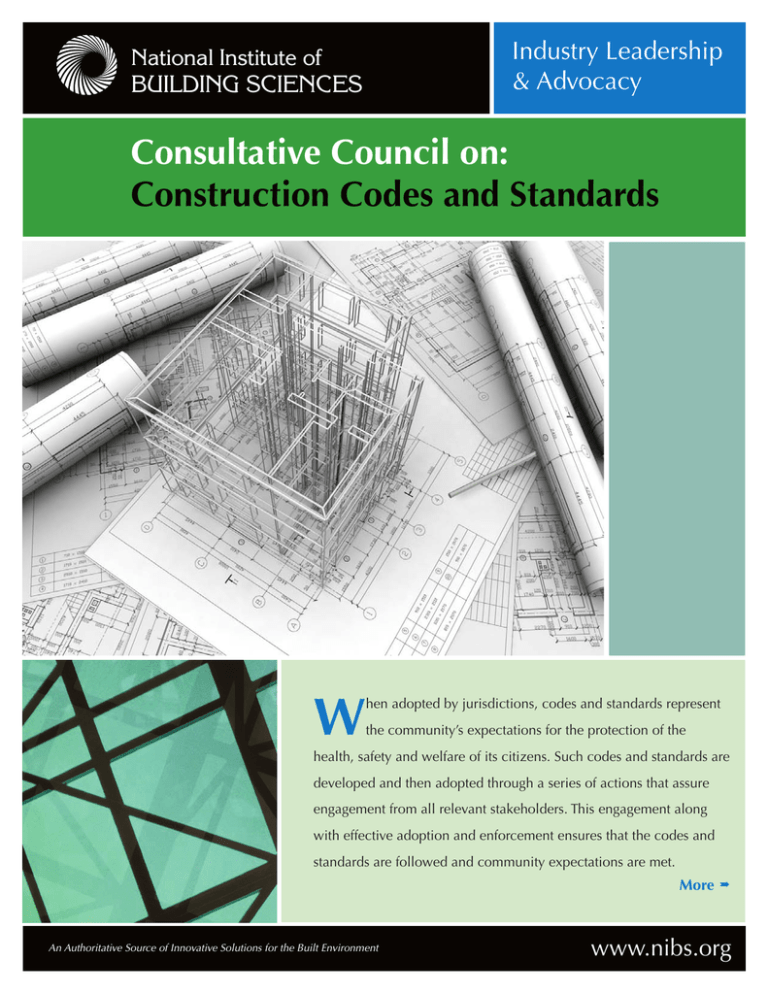
Industry Leadership & Advocacy National Institute of BUILDING SCIENCES Consultative Council on: Construction Codes and Standards W hen adopted by jurisdictions, codes and standards represent the community’s expectations for the protection of the health, safety and welfare of its citizens. Such codes and standards are developed and then adopted through a series of actions that assure engagement from all relevant stakeholders. This engagement along with effective adoption and enforcement ensures that the codes and standards are followed and community expectations are met. More An Authoritative Source of Innovative Solutions for the Built Environment www.nibs.org National Institute of BUILDING SCIENCES Industry Leadership & Advocacy Consultative Council on: Construction Codes and Standards Benefits of Codes and Standards Codes and standards provide a common language and requirements for the design, construction and operations of buildings. This commonality provides many benefits for the public, the building industry and government. The public is assured that buildings provide a minimum level of protection from hazards, accessibility to users and maintenance of public health. Within the construction industry, manufacturers have the consistency necessary to invest in the production and development of products that meet these common needs; designers and contractors have consistent criteria to follow; owners have buildings that possess a consistent baseline of attributes; all industry members work under mutual requirements to achieve a common result; and education and training activities can be developed for each industry segment while mindful of the overall code and standard. Governments have criteria developed with building expert input to assure technical feasibility and cost-effectiveness, access to an education and training infrastructure, and cost savings due to consistent methods for review and enforcement. Developing the Codes and Standards Several different private sector organizations develop model codes and standards based on particular areas of expertise. While the development process is slightly different within each organization, several key criteria are fundamental: • The development process includes a balance of all relevant stakeholders including government, citizens/public interests and building industry representatives—without undue influence from any one particular stakeholder; • A rigorous process is followed to assure that recommendations for alteration receive proper consideration and resolution; and • To facilitate trust and diverse engagement, the process is transparent. Due to the protections and fundamental criteria identified above and the impact of revisions on communities, the development process often takes three to five years. Jurisdiction Adoptions Like the development process within the private sector, the adoption process by governments also varies significantly. Some jurisdictions require legislative action to adopt the latest code version while others have automatic triggers in place upon release of the new model codes. Consideration by a jurisdiction appointed committee or council may be required in some jurisdictions. Staff Contact: Email: Phone: Website: Within these processes, a jurisdiction may elect to amend the model code or develop its own code to address local needs. Once adopted, jurisdictions typically provide a window of time to phase in newly adopted codes to allow for implementation and educational considerations. Code Administration and Enforcement The responsibility to administer and enforce building codes typically falls upon states or local jurisdictions, and the responsibility to submit compliant design documents for a building permit falls on developers, designers and contractors. Enforcement strategies vary according to a state or local government’s regulatory authority, resources and staffing. Programs may include all or some of the following activities: • Review of plans, • Review of products, materials and equipment specifications, • Review of tests, certification reports and product listings, • Review of supporting calculations, • Inspection of the building and its systems during construction, • Evaluation of materials substituted in the field, • Inspection immediately prior to occupancy, • Issuance of permit, certificate of occupancy and/or other administrative documents, and/or • Processing of variance/appeal requests to the applicable code. The availability of resources determines the quality and extent to which jurisdictions perform plan reviews and construction inspections. Jurisdictions vary, and their political leadership plays a role in determining the emphasis placed on local development, construction and enforcement. These differences often lead to differences in the rate of code compliance across a state. Findings and Recommendations • At the state and local level, where code adoption and enforcement is largely conducted, the lack of resources, both financial and technical, significantly affects the ability of state and local officials to ensure that new buildings are satisfying the requirements provided by codes and standards and achieving the inherent benefits. • Increasing the participation of federal, state and local government agencies in the development of codes and standards would yield more uniformity and more consistently adopted and understood codes, thereby increasing the effectiveness of model construction codes. Ryan M. Colker, J.D., Director of Consultative Council/Presidential Advisor rcolker@nibs.org (202) 289-7800 x 133 www.nibs.org
